
These spikey aphids, marked with blotches of brown and tan, are maple aphids.
As I wandered through the woods one day in September, I noticed some spots on a sugar maple leaf. When I flipped it over, I discovered tiny black dots on the underside. They looked like tiny flea beetles to the naked eye (they were very tiny), but I didn’t know of any flea beetles on maple. After putting them under the microscope, I discovered that my tiny bugs weren’t beetles at all, they were maple aphids! They are tiny, dark, and spiky! Cute little suckers! They weren’t doing any significant damage to the leaves that I could tell, although all the leaves in that area had at least a few aphids on the underside. I’ll watch this area next year to see if I can find them again.
Written by: Linda Williams, forest health specialist, Woodruff, (Linda.Williams@wisconsin.gov), 715-356-5211 x232.

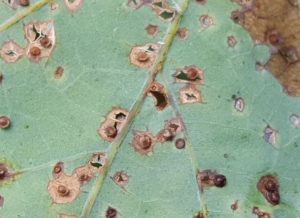
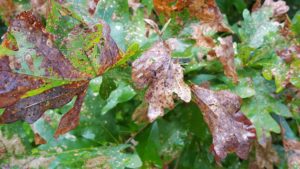
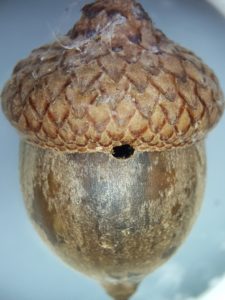
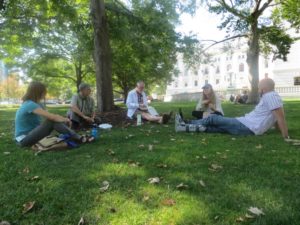 The Urban Forestry team hosted Valerie McClannahan from the Minnesota DNR on September 25th and 26th. Valerie was particularly interested in our Urban Forest Assessment program, the urban wood industry in Wisconsin, and general programmatic items. During her visit, we highlighted the Wisconsin Community Tree Map and the Capital Park inventory, our UFIA program, our canopy assessment project, and the urban homeowner survey. She is interested in how Minnesota can leverage some of their existing work and incorporate some of the additional pieces we are developing for statewide assessments.
The Urban Forestry team hosted Valerie McClannahan from the Minnesota DNR on September 25th and 26th. Valerie was particularly interested in our Urban Forest Assessment program, the urban wood industry in Wisconsin, and general programmatic items. During her visit, we highlighted the Wisconsin Community Tree Map and the Capital Park inventory, our UFIA program, our canopy assessment project, and the urban homeowner survey. She is interested in how Minnesota can leverage some of their existing work and incorporate some of the additional pieces we are developing for statewide assessments. 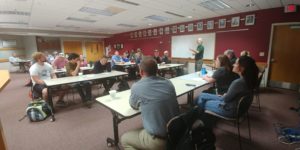 On Wednesday, October 4
On Wednesday, October 4 On September 13th, the 2nd ‘Asia Pacific Urban Forestry Meeting’ was held in Seoul, South Korea. Asia is home to a large urban population that continues to grow, almost depleting many natural resources. This meeting was hosted to share industry knowledge on how well-managed forests and urban green spaces can help relieve many of the socio-economical stresses while creating a more sustainable and resilient urban environment. This year’s meeting was focused on developing an Action Plan to “guide countries toward the sound implementation of urban forestry in the region.”
On September 13th, the 2nd ‘Asia Pacific Urban Forestry Meeting’ was held in Seoul, South Korea. Asia is home to a large urban population that continues to grow, almost depleting many natural resources. This meeting was hosted to share industry knowledge on how well-managed forests and urban green spaces can help relieve many of the socio-economical stresses while creating a more sustainable and resilient urban environment. This year’s meeting was focused on developing an Action Plan to “guide countries toward the sound implementation of urban forestry in the region.”